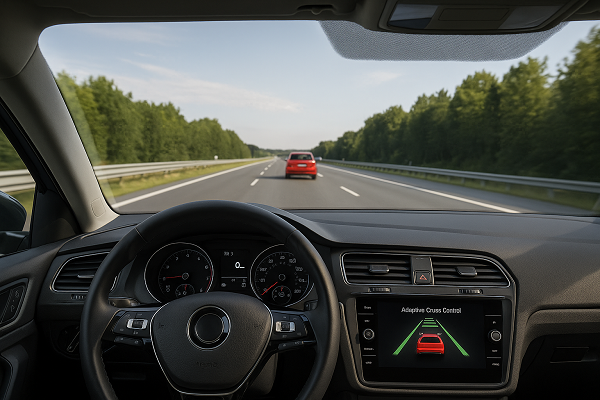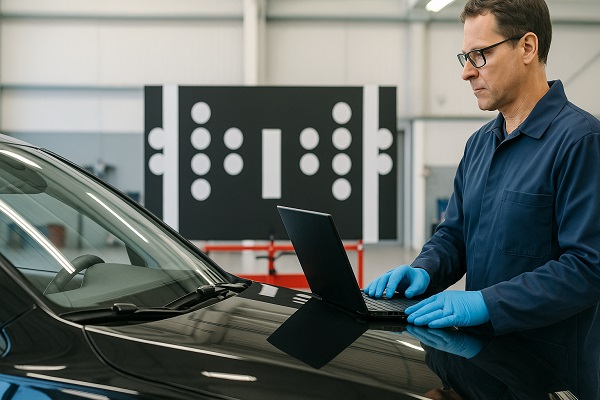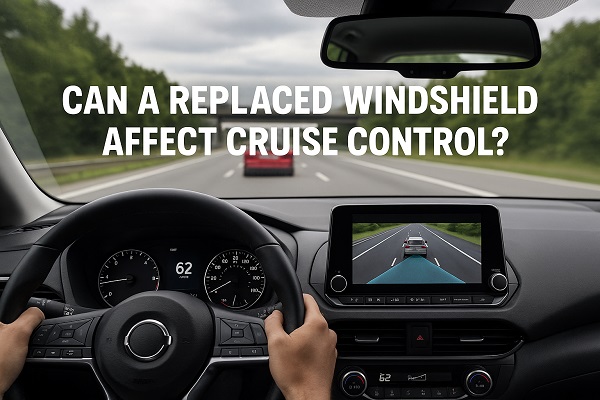When drivers hear the phrase “windshield replacement,” they usually think about glass safety and visibility. However, a replaced windshield can affect cruise control—especially adaptive cruise control systems that rely on advanced sensors and cameras mounted near the glass. This makes the question of windshield replacement more complex than just swapping out broken glass.
Why Windshields Matter in Modern Vehicles
Today’s vehicles are packed with driver-assistance technologies. Beyond providing a clear view of the road, the windshield often houses sensors, cameras, and radar systems that control features such as:
- Adaptive cruise control
- Lane departure warning
- Forward collision detection
- Automatic emergency braking
If the windshield is replaced without properly calibrating these systems, your car’s cruise control and other safety features may not function correctly.
Cruise Control vs. Adaptive Cruise Control
Not all cruise control systems are created equal.
Standard Cruise Control
- Maintains a constant speed set by the driver
- Operates independently of windshield-mounted sensors
- Rarely impacted by windshield replacement unless electronic components are disturbed
Adaptive Cruise Control (ACC)
- Adjusts speed automatically to maintain safe following distance
- Uses radar, lidar, or cameras often mounted near or behind the windshield
- Highly dependent on sensor accuracy and windshield calibration
This means a windshield replacement is unlikely to affect traditional cruise control, but it can significantly impact adaptive cruise control systems.
How Windshield Replacement Affects Adaptive Cruise Control

When technicians replace a windshield, even a small misalignment of the camera or sensor can cause serious issues. Common effects include:
- Inaccurate speed adjustments – The system may fail to slow down or speed up at the right time.
- Error messages – Your dashboard may show warnings about unavailable or malfunctioning driver-assist systems.
- Reduced safety – Following distance detection could be off, putting drivers at risk.
Calibration: The Key Step After Replacement
Windshield replacement is no longer just about installing glass. Calibration ensures that your vehicle’s cameras and sensors are aligned correctly.
Two Main Types of Calibration
- Static Calibration
- Performed in a controlled workshop environment
- Requires specialized targets and equipment
- Can take several hours
- Dynamic Calibration
- Requires driving the vehicle on the road under specific conditions
- Uses natural surroundings to realign cameras and sensors
- Often combined with static calibration for accuracy
Without this process, adaptive cruise control and other Advanced Driver Assistance Systems (ADAS) may not work as intended.
Signs That Calibration May Be Needed
After a windshield replacement, watch out for these red flags:
- Warning lights related to driver-assist features
- Cruise control disengaging unexpectedly
- Lane-keeping or collision avoidance not responding correctly
- Inconsistent following distance when adaptive cruise control is active
If you notice these signs, return to the service center for recalibration immediately.
Choosing the Right Windshield Replacement Service
Not all auto glass shops are equipped to handle modern recalibration. When selecting a service provider, ask:
- Do they have the tools and training for ADAS calibration?
- Will they perform both static and dynamic calibration if needed?
- Do they provide documentation or proof of calibration after installation?
- Are they certified by vehicle manufacturers or recognized auto glass associations?
Choosing a shop that understands the connection between windshield replacement and cruise control ensures safety and reliability.
Costs Associated with Calibration

Many drivers are surprised that replacing a windshield today costs more than just the glass. Factors include:
- Price of OEM (Original Equipment Manufacturer) vs aftermarket glass
- Labor for removal and installation
- Calibration procedures (which can add several hundred dollars)
Insurance may cover part of the cost, but always check with your provider to see if calibration is included.
Safety Risks of Skipping Calibration
Neglecting calibration after windshield replacement can lead to more than minor inconveniences:
- Increased accident risk due to inaccurate sensor input
- Malfunctioning adaptive cruise control that doesn’t react to traffic
- Legal liabilities if safety systems are knowingly disabled or faulty
Ensuring proper calibration keeps both you and other road users safe.
Practical Tips for Drivers
If you are concerned about your cruise control after windshield replacement, keep these best practices in mind:
- Verify calibration before leaving the repair shop
- Test cruise control in a safe environment after replacement
- Choose certified technicians who specialize in ADAS-equipped vehicles
- Ask about warranty coverage for calibration and windshield installation
A replaced windshield can absolutely affect cruise control, especially adaptive cruise control systems that depend on precise camera and sensor alignment. While standard cruise control is typically unaffected, failing to recalibrate after glass replacement may cause advanced systems to malfunction. By choosing qualified technicians and ensuring calibration is performed, you protect both your safety and your vehicle’s technology.
Content reviewed and published by SLP AutoGlass Editorial Team.

